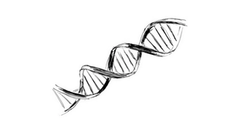
EP. 2A: The Effect of Larotrectinib on the Treatment Landscape for NTRK Fusion-positive Cancers
In this first video of the series, Steven G. Waguespack, MD, of the University of Texas MD Anderson Cancer Center provides an overview of the safety and efficacy of larotrectinib and considers how it has impacted the treatment landscape for NTRK fusion-positive cancers.
Episodes in this series

Selective NTRK inhibitors such as larotrectinib have really become game-changers in the treatment of various solid tumors. Larotrectinib, in particular, was FDA-approved in a tissue-agnostic fashion, meaning that its use is in tumors that harbor a fusion in one of the NTRK genes.
The selective NTRK inhibitors are very effective for treating these tumors. Many of them are very rare tumors without previous good standard-of-care. The response to treatment is very rapid, so the treatment works. You see the tumor shrinking very early on, and more importantly, the patients tolerate treatment very well. These drugs are associated with generally mild and manageable side effects with very few severe side effects that warrant reducing the dose or stopping the drug altogether.
At the 2021 ATA meeting, I was fortunate to present, on behalf of my colleagues, the results of a pooled analysis of thyroid cancer patients who were treated on 1 of 3 different clinical trials during the development of larotrectinib. In terms of the demographics of the patients in the 3 studies, there were a total of 29 patients. About 69% of those had papillary thyroid carcinoma (PTC), there were 24% with anaplastic thyroid carcinoma (ATC), and the remaining 7% had follicular thyroid carcinoma. One caveat is that the studies did not require a centralized review of the pathology. On subsequent analysis, it became clear that there were also 3 patients who had another subtype of thyroid cancer called poorly differentiated thyroid carcinoma, and 2 of those, for the purpose of this study, had been classified as anaplastic and 1 as papillary carcinoma.
What's incredible about the larotrectinib data is the significant response rate that is seen in the patients. When looking at the pooled analysis of these 3 trials, the objective response rate was 71% across all the patients. If you specifically looked at the patients with the differentiated thyroid carcinomas, which are typically better behaving, the objective response rate was 86%.
When looking at the overall drug-related AE profile, it tends to be mild. What we specifically see with this drug are myalgias and dizziness. That is a testament to the fact that TRK signaling is throughout the nervous system, so it’s not unexpected that a selective TRK inhibitor might cause some neurological side effects. Some other AEs that were seen more consistently included abnormalities in white counts and hemoglobin and elevation of liver function studies.
There were very few grade 3 or higher adverse events (AEs) that were felt to be larotrectinib-related. Specifically, there were only 2 patients who had a grade 3 AE, and both of those patients had abnormalities either with decreased hemoglobin or decreased white cell count. These AEs do resolve with a drug hold or dose reduction. Those are really the main grade 3 and higher [AEs]. There were 2 patients who died on trial, but they died of progressive cancer, and that was not felt to be larotrectinib-related. The good news, though, from an AE perspective, is that I think only 2 patients had to do a dose reduction, and there were no patients who discontinued treatment due to an AE.
Drugs like larotrectinib are really game-changers because they’re so effective. They have very rapid onset to response, and they’re very well-tolerated. I can only speak from a thyroid cancer perspective, but I think it teaches me—and all of us—that, when you see a patient with an advanced thyroid cancer or really any solid tumor that might harbor an NTRK fusion, is to first look for it. I think now, more people are aware of these fusions and [are] looking for them. Next-generation RNA sequencing is the ideal way to look for an NTRK fusion.
In my mind, it’s also making drugs like larotrectinib a first-line therapy for these tumors that harbor NTRK fusions. That’s changing our treatment algorithm and how we think about things. It’s also a game-changer because of the fact that these tumors respond so quickly. Now the question is, can you use these drugs in a neoadjuvant setting? Obviously, a patient could present with very locally advanced thyroid cancer, and if we find they harbor an NTRK fusion, then we can offer them up-front systemic therapy, whereas historically, we would just go straight to surgery and radioactive iodine.
Speaking of radioactive iodine, there is accumulating evidence that the use of a selective NTRK inhibitor might allow the tumor to concentrate the radioactive iodine more effectively. There’s now interest in exploring using these drugs to make the tumor take up the iodine more effectively. Drugs like larotrectinib, now that they’re on the scene, have really changed the thought process of how we treat patients with advanced thyroid cancers.














































